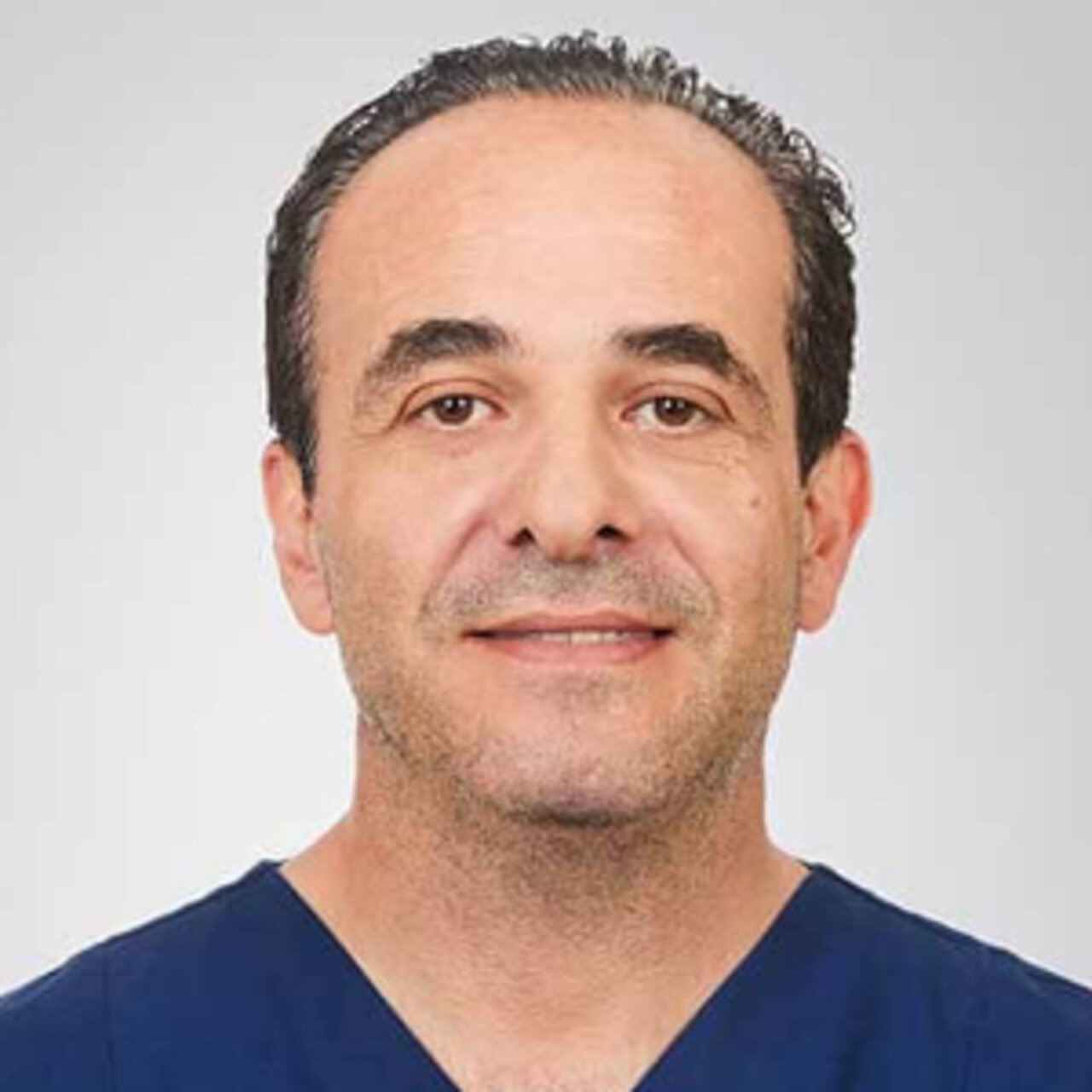Specialists in Breast Reduction
5 Specialists found
Information About the Field of Breast Reduction
Breast Reduction (Mamma Reduction)
The female breast has always been considered a symbol of beauty and femininity. But not everyone is blessed with well-formed and perfectly sized breasts. There is much discussion about breast augmentation for aesthetic reasons. Psychological and primarily physical problems of women and also men with too large breasts are often misunderstood.
What Is a Breast Reduction?
A breast reduction, also called mamma reduction, is a surgery to reduce the size of the breast. It can be carried out in both women and men as part of gynecomastia surgery. In contrast to a breast lift, breast reduction involves the removal of fatty and glandular tissue in order not only to change the shape of the breast but also to reduce it more or less. A breast reduction is often combined with a breast lift.
Reasons for a Breast Reduction
While breast enlargements are usually carried out for aesthetic reasons, there are significant physical reasons for breast reduction (mamma reduction). Often, excessively large breasts lead to
- Back pain
- Headache
- Neck pain
The enormous weight causes tension and malposition, which damages the spine in the long run. Wearing a bra often leads to unpleasant incisions in the shoulder and back area. Besides, sore spots can form under the breasts due to sweating, which particularly tends to fungal infections due to the damp, warm environment.
Due to their weight, large breasts tend to lose their elasticity at an early stage and lead to the appearance of unaesthetic sagging breasts. Similar breast changes can also be associated with pregnancy and be the reason for having breast reduction carried out.
Another reason for breast reduction is asymmetrical breasts or the adjustment of the breasts after breast cancer surgery. Breast reduction can help to relieve the mental and physical stress caused by oversized breasts by restoring natural body proportions.
What Examinations Are Carried Out Before Breast Reduction?
A detailed consultation with the plastic surgeon and the patient is important before starting the treatment. The patient can and should express her wishes and ideas, and the plastic surgeon will inform her about possible surgical techniques and the course of treatment.
In order to ensure all conditions for a smooth surgery, a physical examination, a blood test, and an electrocardiogram will be carried out. Depending on age, an ultrasound examination and mammography of the breasts (early detection of cancer) should also be carried out to excluding possible breast disease.
It is also important that the body growth and breast growth has completed before the treatment. Pregnancy and breast-feeding should have completed at least eight months before so that the breasts have returned to their normal state.
The Procedure of Breast Reduction
The breast reduction always involves an inpatient stay and general anesthesia. Outpatient treatment is only possible in rare cases. The surgery itself takes about 2-4 hours. The hospital stay after the surgery is usually 3 to 5 days.
Depending on the size and type of skin and mammary gland condition, different surgical techniques are available. Usually, the breast reduction is combined with a breast lift at the same time to obtain a well-shaped breast.
In breast reduction, the plastic surgeon removes excess skin, fatty tissue, and mammary gland tissue from the lower breast area by skin incision. The unaffected upper breast area is used for new breast formation. To do this, the nipple, including blood supply and nerves, must be moved slightly upwards. By sparing the surrounding tissue, later breastfeeding is not affected, just as the sensitivity of the nipple is not.
The incision itself varies depending on the surgeon and the woman's breast. The most common types include the T-incision, I-incision, and L-incision. All incisions include the incision around the nipple and from there longitudinally down to the breast fold (I incision). The T-cut also has an additional incision along the breast fold in both directions from the center, the L-cut only in one direction. The last two variants allow removing large tissue parts, but they are also associated with longer scars. Those methods are particularly suitable for very large breasts.
The I incision gets by with fewer scars, but less tissue can be removed. The excessive skin is provided with a purse-string-suture, which supports the natural reduction of the breast skin. The result of the reduction cannot be evaluated earlier than six months after the procedure. This option is advantageous for younger women (because of the elastic skin) and minor breast reductions. For suturing the incisions, the plastic surgeon uses extra-fine thread material, which leaves the scars as little visible as possible.
What Has to Be Kept in Mind after a Breast Reduction?
As with any surgery, breast reduction surgery involves the risk of bleeding, infection, injury to neighboring structures, and impaired wound healing. Sensitivity disorders of the nipple usually disappear entirely after a few months.
Immediately after the surgery, slight pain has to be expected, which should disappear after a few days. To relieve the strain on the breast and sutures, a pressure dressing is applied after the surgery. After a few days, this is replaced by a medical bra. During the first three weeks, this bra is worn around the clock, after that only during the day. During this time, sport in general and strain on the upper body should be avoided.
Possible Consequences After Breast Reduction
What are the risks associated with breast reduction?
Thanks to the most modern surgical techniques and advanced medical technology, the risks of a breast reduction have been gradually reduced in recent years. Nevertheless, every surgical procedure still involves risks - even minor ones.
It is not without reason that possible risk factors and consequences of a breast reduction are a fundamental part of every individual consultation. In addition to general risks, there is often a particular risk related to existing diseases or personal history. The patient must be familiar with all aspects of the planned surgery. Only then does the person willing to undergo surgery have a well-founded basis for making a decision for or against surgery.
No Surgery Without Risk
First of all, there are general risk factors that are equally present in every surgery. In addition to the general anesthetic risk, bleeding may occur during the surgery, but this can usually be stopped quickly. In rare cases, neighboring tissue structures are also injured during the incision or removal of glandular tissue. Likewise, the risk of postoperative thrombosis due to blood clots cannot be excluded entirely. In a few cases, infections and wound healing disorders may occur - which negatively influences the healing process.
Breast Reduction - Possible Consequences
No matter how well a breast reduction surgery is carried out, there are always imponderables that must be taken into account when deciding in favor of breast surgery. The risk involved in a breast reduction depends, among others, on the choice of the surgical method and the incision technique. The more incisions required, the higher the risk of impaired wound healing with a corresponding delay in wound healing. Special attention has to be paid to the incision techniques that include a horizontal incision in the fold under the breast. This is especially the case when reducing very large breasts. In this case, a lot of glandular tissue is usually removed - under certain circumstances; additional liposuction may also be useful. These factors slightly increase the risk of complications.
Among the undesirable side effects of a breast reduction are post-operative bruising, which can sometimes still be seen a few weeks as discoloration.
The Functionality of the Mammary Gland
Another possible consequence of a breast reduction may be sensitivity disorders of the nipples, which usually disappear after some time. In rare cases, a breast reduction will cause damage to the milk ducts or nerves, which will lead to a permanent loss of the ability to breastfeed. Especially when reducing voluminous breasts, it is usually necessary to relocate the mammary gland in order to ensure an aesthetically beautiful and natural breast shape. The mammary gland is completely separated from the vessels supplying the breast and reconnected to the blood vessels in its new position. This can very rarely lead to a loss or impairment of breastfeeding ability. If the blood supply to the nipple cannot be restored, in exceptional cases, the loss of the mammary gland may also occur.
Possible asymmetries
Last but not least, there is the risk of small asymmetries in a breast reduction - even if it is minimal. However, very few women suffer from this. Sometimes such asymmetries are not immediately visible but develop some time after the surgery. Most often, asymmetries occur as a result of a wound-healing disorder or due to improper wearing of the support bra. The consistent wearing of the medical support bra over a certain period is of utmost importance to effectively counteract possible asymmetries.
Cost Issue for Follow-Up Treatments
Breast reduction is considered a cosmetic surgery with few exceptions by health insurance companies. Since the health care reform in 2007, patients have been obliged to contribute to the costs of treatment for possible consequential damage. For procedures that become necessary due to complications after a breast reduction, health insurance only partially covers the costs - even if the measures are medically necessary. If the subsequent treatment is carried out for purely aesthetic reasons, the patient must pay for it in full.
Risk Minimization Through the Right Choice of Doctor
Although breast reduction is a, frequently carry out breast surgery, not every plastic surgeon has the same experience and expertise in this field. The following also applies to breast reduction: The more breast reductions a doctor has carried out, the more medical competence and surgical experience he or she can show. This also affects the risk assessment of a surgery. If the breast reduction is in the hands of an experienced specialist, the risks associated with a breast surgery even drop. For this reason alone, the costs of a breast reduction should not be the primary consideration. After all, a breast reduction is not only about the aesthetic aspect, but also about health, which cannot be valued highly enough.
Which Doctors Are Specialists for Breast Reduction in Germany and Switzerland?
If you are thinking about undergoing a breast reduction, look for a doctor's recommendation or clinic recommendation to find an experienced specialist. Patients should pay attention to the doctor's specialist training. Since the term cosmetic surgeon is not protected, every doctor can call himself a cosmetic surgeon. But only specialists for plastic and aesthetic surgery have completed the 6-year training as "cosmetic surgeon". That is why they are the right contact persons for breast reduction.
But also, specialists for gynecology and senology can carry out breast surgeries professionally, as they are specialists for the female breast. A good indicator of a doctor's experience for a particular surgery is the number of surgeries carried out annually. Therefore, it is advisable to get a personal impression of the surgeon before undergoing a breast reduction.
We will help you to find an expert. All listed doctors and clinics in Germany and Switzerland have been checked by us for their outstanding specialization in breast reduction and are waiting for your inquiry or treatment request.
Sources:
- Deutsche Gesellschaft für Ästhetisch-Plastische Chirurgie www.dgaepc.de
- Henne-Bruns, Doris ; Dürig, Michael ; Kremer, Bernd ; Bruns, Doris Henne-: Chirurgie. 2. Aufl.. Stuttgart: Thieme, 2003.
- www.brustsurgery-vergleich.de/ratgeber/brustsurgery-info/risiken-einer-brustverkleinerung/
- www.niklasnoack.de/behandlung/oberkoerper/brustverkleinerung.html
- www.mybody.de/umfrage-wer-traegt-die-kosten-bei-komplikationen-nach-schoenheits-ops.html




